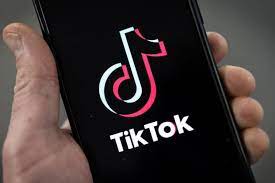How Live Streaming Works and the Power of Live Streaming Chat for Real-Time Engagement

Live streaming has transformed how we consume, share, and interact with content online. From online classes and product launches to concerts and church services, live video allows anyone to reach a global audience in real time. But have you ever wondered how live streaming works behind the scenes or how adding live streaming chat can dramatically boost engagement?
In this blog, we’ll break down the technology that powers live streaming and explore why real-time chat is becoming an essential tool for creators, educators, and businesses.
How Live Streaming Works: A Simple Breakdown
At its core, live streaming is the process of capturing video and audio in real time, encoding it into a digital format, and transmitting it over the internet to viewers — as it happens.
Here’s a step-by-step look at how live streaming works :
1. Capture
The process starts with a camera, microphone, or screen recording software capturing raw video and audio.
2. Encoding
This raw input is then compressed and encoded using broadcasting software like OBS or a hardware encoder. The encoder converts the media into a digital stream, typically in H.264 or H.265 format.
3. Streaming Protocol (Ingest)
The encoded video is sent via a streaming protocol like RTMP (Real-Time Messaging Protocol) or SRT to a live broadcast server or cloud platform.
4. Transcoding & Packaging
The server receives the live stream and may transcode it into multiple resolutions. It’s then packaged using streaming protocols like HLS (HTTP Live Streaming) or DASH to support adaptive bitrate streaming.
5. Delivery via CDN
The packaged video is distributed globally through a Content Delivery Network (CDN), allowing viewers anywhere in the world to watch with minimal buffering.
6. Playback
Viewers watch the stream on a video player embedded in a website, app, or platform. The player automatically selects the best video quality based on internet speed and device capabilities.
All of this happens in real-time, with only a few seconds of latency depending on the streaming setup.
What Is Live Streaming Chat?
Live streaming chat allows real-time interaction between streamers and viewers through a messaging interface embedded alongside the live video. Viewers can send messages, ask questions, respond to polls, or participate in moderated discussions – all while watching the live event.
Live chat transforms passive video viewing into an interactive experience, fostering a sense of community and increasing retention.
Why Live Streaming Chat Matters
Adding chat to your live stream isn’t just about engagement – it directly enhances the value of your broadcast. Here’s how:
1. Audience Interaction
Viewers can ask questions during a webinar, interact with instructors during an online class, or cheer during a live performance – making the experience feel participatory.
2. Instant Feedback
Creators and hosts can adapt the content on the fly based on audience responses, improving relevance and value.
3. Retention & Watch Time
Live chat keeps viewers glued to the stream. When people engage, they stay longer – and that can directly improve monetization and viewer satisfaction.
4. Community Building
Over time, active chats foster loyal communities that keep coming back to your streams. This is especially valuable for educational brands, influencers, and membership-based platforms.
5. Moderation & Control
Most live chat tools allow you to assign moderators, block spam, and highlight key messages, ensuring a productive and safe environment for viewers.
Best Practices for Combining Live Streaming with Chat
To get the most out of your live stream and chat, follow these tips:
- Embed chat on the same page as the video to keep the audience focused
- Moderate actively to prevent spam and maintain quality discussion
- Acknowledge comments from chat during the stream to keep viewers engaged
- Use slow mode or subscriber-only chat when needed to control volume
- Combine with analytics to track how chat engagement correlates with watch time and conversions
When You Should Add Live Chat to Your Stream
Live streaming chat is especially powerful for:
- Webinars and live courses
- Town hall meetings or Q&A sessions
- Religious services or community events
- Product demos and launches
- Virtual conferences and performances
If interaction and feedback matter to your live stream goals, then chat should be part of your setup.
Final Thoughts
Understanding how live streaming works helps you deliver better-quality video. Adding live streaming chat takes it a step further, turning your broadcast into a two-way, engaging experience that builds connection and trust.




